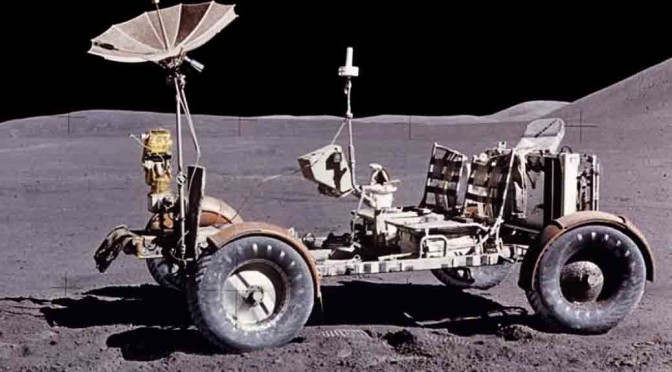By Anupum Pant
Space exploration is a tough job. Besides a myriad of challenges that have to be dealt with, space equipment and astronauts travelling to places like the moon or mars, have to deal with a peculiarly wicked foe – The dust.
This isn’t the kind of normal dust we deal with here on earth. ‘Downright evil’ is the phrase that describes the dust on moon! We may not realize it, but lunar dust is a filthy thing and causes a lot of problems. Of course, the dust on mars is no better.
Back in 1972
For instance, let us see how moon dust makes things complicated for engineers and astronauts.
Most of the upper surface of the moon is covered with a mixture of loose material comprising of dust, soil, rocks and pebbles (and other random stuff too). Normally, at places, this layer of mixture ranges from 4 to 6 meters in thickness.
The fine part of this mixture is called the lunar soil and is significantly different from the soil found on earth. It is present almost everywhere on the surface of the moon and is a result of breaking of rocks into small particles by meteorite and micrometeorite impacts; also there is no wind and rain to soften the pieces. This is the part of that loose stuff which is known for causing immense troubles.
The dust is super-fine and extremely hard. You can think of it as collection of little shards of glass. Despite being completely dry, it sticks to everything it touches and as it is super-fine, it can get into tiny creases. If inhaled, it can be toxic; like millions of tiny sharp shards piercing into the inner walls of your respiratory system. A tiny amount of it can eventually kill a full grown man.
Back in 1972, the Apollo 17’s crew learnt this as soon as they stepped out. The dust started clogging their air vents and started dropping the pressure. When returning to their space capsule, Jack Schmitt and Eugene Cernan forgot to brush off the dust. They were stuck with it for the whole time during their journey back home. Some of the dust went airborne in the craft and Schmitt started complaining of congestion. Fortunately, the amount was too small to hurt them a lot. Soon the symptoms subsided and space agencies learnt a lesson – Find a way to deal with the lunar dust.
On mars: Dust on mars can travel places due to dust storms and cause more problems.
Solution
Scientists at NASA found a great way to deal with this dust using an electric zap. They were able to develop electrical fields which can clear about 99% of the dust from the equipment. These dust shields will be tried on in the year 2016.
